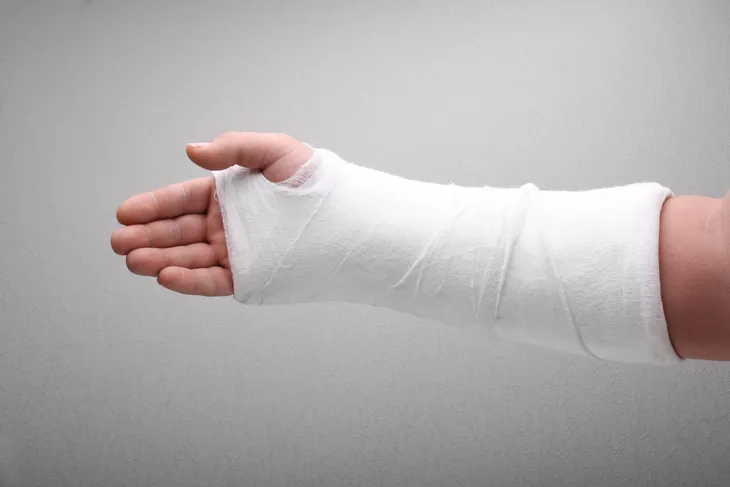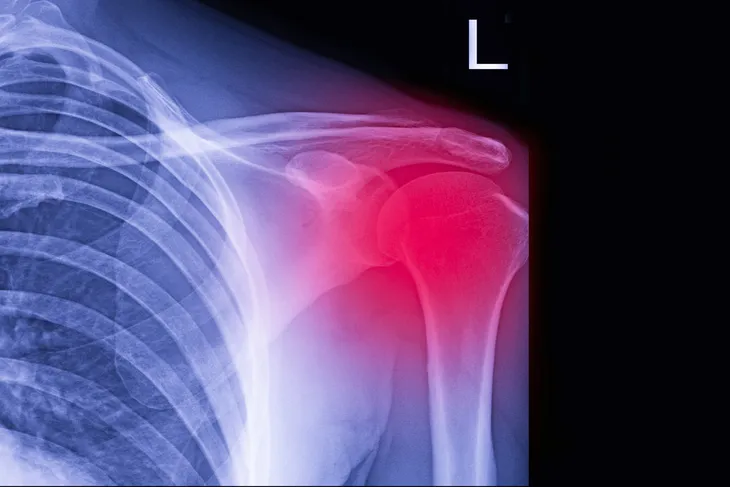If you’ve ever broken a bone, you probably thought it was best to rest and not put any weight on it. But somewhat counter-intuitively, exercise may actually play an important role in making sure fractures heal properly. In fact, research shows that being physically active can promote bone healing – and even help you avoid future fractures.
Almost 178 million new bone fractures happen worldwide each year. Fractures can happen for any number of reasons, including falls or sports injuries. While most people heal fine from their injuries, people who are older, diabetic or those who have osteoporosis face a significantly higher risk of dying or becoming disabled from a bone fracture.
Another major problem is that around 5-10% of fractures don’t heal properly. Common causes are fractures that are difficult to hold together, or low blood flow to the area. Some important risk factors include the severity of the fracture, smoking, old age, obesity and diabetes. The bones in the hand, the tibia and fibula (both in the leg) and the femur (thigh bone) are also more prone to improper healing.
Here is where a bit of exercise can help. A study looking at 166 surgically treated tibia fractures discovered that early weight-bearing exercise was linked with faster healing – even in participants who had fractures that weren’t healing properly.
Healing was defined as the person’s ability to bear full weight with no pain, and with x-rays showing the fracture had united or mended. On the other hand, a small study investigating what would happen if people didn’t do weight-bearing exercises six weeks after surgery showed participants had significant bone loss.
The reason exercise has this effect can be easily explained. When we break a bone, oxygen and blood flow are both extremely important for helping the fracture heal. So when we exercise, our blood vessels enlarge, allowing more oxygen, nutrients and growth factors to flow to the fracture site. Exercise also triggers the release of an energy molecule called adenosine triphospate (ATP). Studies with bone cells in a petri dish show that mechanical stimulation (similar to what would happen during exercise) triggers the release of ATP – and this encourages the formation of new bone, a vital step to bone healing.
But there is also a third mechanism by which exercise helps heal our bones. Studies show that osteocytes – a type of bone cell – are activated by the muscle contractions that happens during weight bearing exercise. This then causes the osteocytes to instruct other bone cells to create new and stronger bone tissue allowing them to patch the edges of the broken bone.
My own research has also shown that stretching osteocytes (a technique to mimic exercise in the lab) can spur osteocytes into action, causing them to trigger the release of proteins involved in bone development. Our study also supports the growing notion that exercise helps promote the survival of osteocytes – which may also help with bone healing.
Another 2021 study conducted in zebrafish showed that mechanically stimulating osteocytes helps improve bone healing and suppress inflammation – which are both important for helping repair fractures. Like humans, zebrafish have osteocytes – meaning these findings may be similarly reflected in humans.
So how would this work in practice? Of course, you should always listen to the advice your doctor has given you when it comes to exercise, especially taking into consider age, fitness level and the severity of the fracture.
But if you have a broken leg in a plaster cast, for example, exercise might involve laying on the floor, lifting the leg into the air and holding it for five seconds before lowering. Do this around ten times. While sitting, you can also press the foot against the floor for five seconds and released – again repeating for ten times. Wiggling and curling your toes is also beneficial for sending blood flow to and from the extremities.
If you have a broken wrist, you could bend your elbow, hold a strength ball, squeeze the ball and relax. Again, repeat the exercises ten times. As the broken bone begins to heal, your doctor will typically ask you to progress to partial and full weight-bearing exercises.
It usually takes six to eight weeks to heal a minor fracture and 20 weeks for more major ones. But while we know exercise improves bone healing, it’s difficult to quantify just how much quicker it helps bones heal. Healing time may also depend on a variety of other factors – such as age, pre-existing illnesses, physical fitness, lifestyle and whether a person actually performs the exercises.
Livia Santos, Senior Lecturer in Tissue Engineering and Mechanobiology, Nottingham Trent University
![]()
This article is republished from The Conversation under a Creative Commons license. Read the original article.






